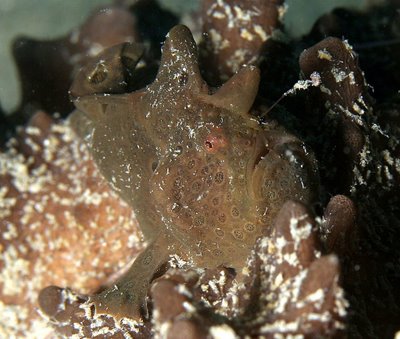

Most of the photos posted to this page were taken with a Canon 20D in an Ikelike housing with TTL connection to an Ikelite DS-125 and an Inon 2000 substrobe. I also use a Sony Cybershot P150 in a Sony housing attached to a Sea & Sea YS-25 via fiberoptic cable.




Species of Melibe feed on shrimps, crabs and other small crustacea which they catch by waving the inflated oral hood over the substrate like a metal detector. When the sensory papillae touch a crustacean the hood rapidly closes, trapping the prey inside where it is gradually manipulated back to the 'mouth'. Species of Melibe lack a radula, prey remaining alive in the gut until killed by digestive juices.Just a few weeks ago I commented somewhat sympathetically on sea slugs' incredible ability to endure the stinging, biting, and otherwise annoying microscopic 'wildlife' they encounter. But these Melibe seem more like formidable predators, unlikely to be deterred by a pesky syllid.



